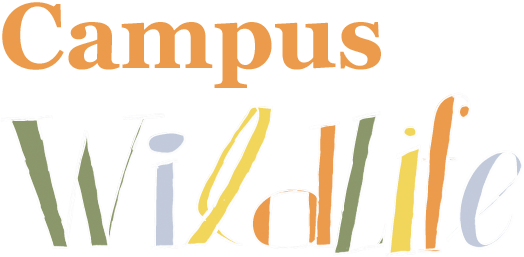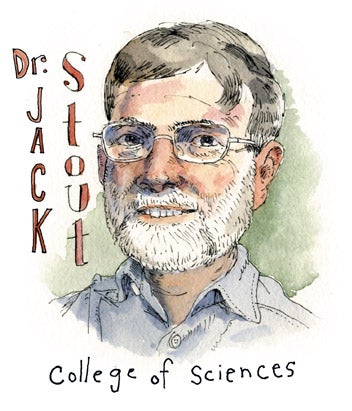Campus Wildlife

College life at UCF wouldn’t be the same without them.
“We bought the land to build a university, not a nature preserve,” UCF biology Professor Emeritus Jack Stout says, as he stands before a 4-by-4-foot aerial map of the campus, studying it intently. “But it turned out to be both.”
Hurriedly crossing from asphalt parking lot to glass and concrete buildings, busy students, faculty, staff and visitors aren’t the only beings who call this campus home. Despite the fact that these 1,415 acres are intended to create an ideal environment for higher education, they also happen to provide an ideal environment for a wide array of reptiles, amphibians, mammals and birds, as well as varied plant life.
Preservation and the Master Plan
Dr. Stout points to an area in the northwest corner. “Lake Claire,” he says, “is actually two sinkholes that coalesced. It’s home to bass, bluegill, gar, soft-shell turtles and the occasional alligator.”
Gray squirrels, raccoons, sandhill cranes and the North American river otter also call UCF home, as do creepy creatures like the evening bat, striped newt and the two-toed amphiuma, a snakelike salamander that grows up to 4 feet in length and has four vestigial legs, each with two useless toes.
A number of threatened or protected species also make their homes on the UCF campus, including the sand skink and the gopher tortoise. The master plan for the university specifically designates some areas as preserves, resulting in significant areas of the campus remaining untouched. These areas, Stout points out, offer “excellent examples of traditional Central Florida ecosystems.”
“The sand pine scrub in the northwest corner of the campus is one of the oldest and most endangered habitats in the state,” he says. This area is home to such wildlife as the Florida mouse, scrub lizard and gray fox. And eagle-eyed visitors can commonly spot an array of birds, from the red-bellied woodpecker to the red-shouldered hawk, in the treetops.
Gone but not Forgotten
While it has been years since wild hogs were spotted on campus, this land was home to them at one time too. The Florida scrub jay has also left UCF. “They are gone,” Stout says. “They moved out of Orange and Seminole counties.”
Another former campus resident is the indigo snake, a “huge but gentle” species which preys on other snakes and helps control the population of more dangerous species, including the eastern diamondback rattlesnake. Their loss, Stout says, “is a real shame.”
From Virgin Wilderness to Outdoor Classroom
The common perception that UCF acreage was predominantly cattle farms prior to the development of the university is only partly true. This land has been inhabited for centuries and used in a variety of ways.
“Many years ago, I met a man who was one of the original planners of the campus,” Stout says. “He showed me to an area around Lake Lee that had these big flat tiles—the remnants of an old homestead—that created a beach-like effect on the lakeshore. This was not virgin wilderness before the campus was built,” he says. Excitedly, he points to the north shore of Lake Lee. “This was a Confederate rest and rehabilitation camp during the Civil War.”
Pointing to another area, he continues, “Much of this land used to be part of the turpentining industry. They collected resin from the longleaf pines and used the pine tar to waterproof ships, ropes and sails for the Navy.”
“Oh, and over here,” Stout says, referring to a small parcel of land east of the cypress dome, a stand of old cypress trees that grow tallest in the middle, “was almost certainly a homestead. There are sabal palms in that area as well as other parts of the campus, and this is not sabal palm habitat,” he says adamantly. “I am sure that they originated as part of planned landscaping.”
For several minutes, Stout stands before the large map, clearly lost in thought. Then, quietly, he says, “You know, this campus has everything you would want in Central Florida. It’s the perfect place for an ecologist to teach. I have a classroom right outside the door.” ✦


